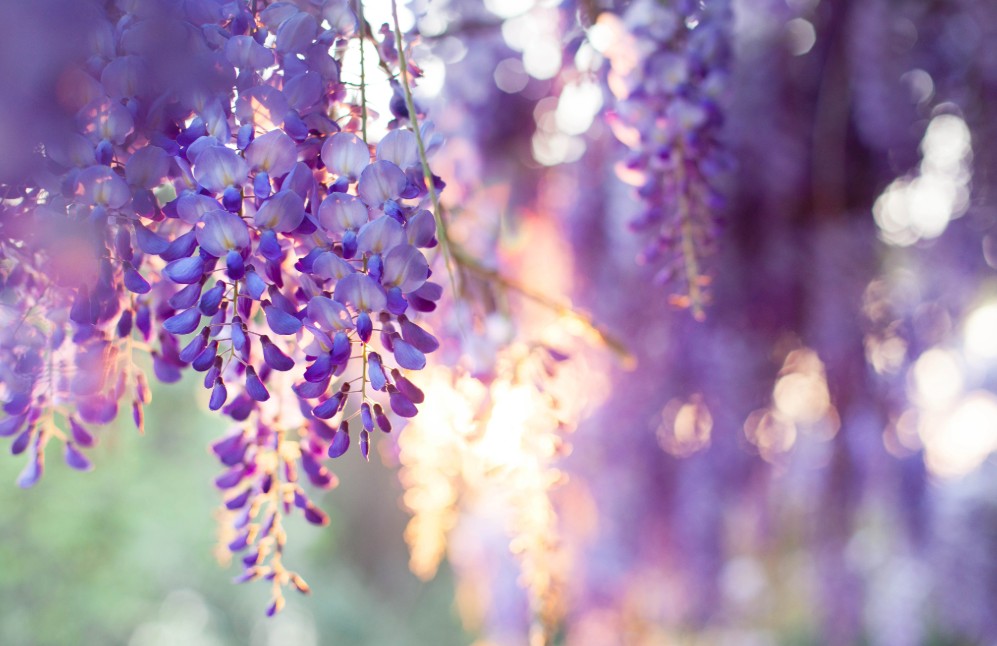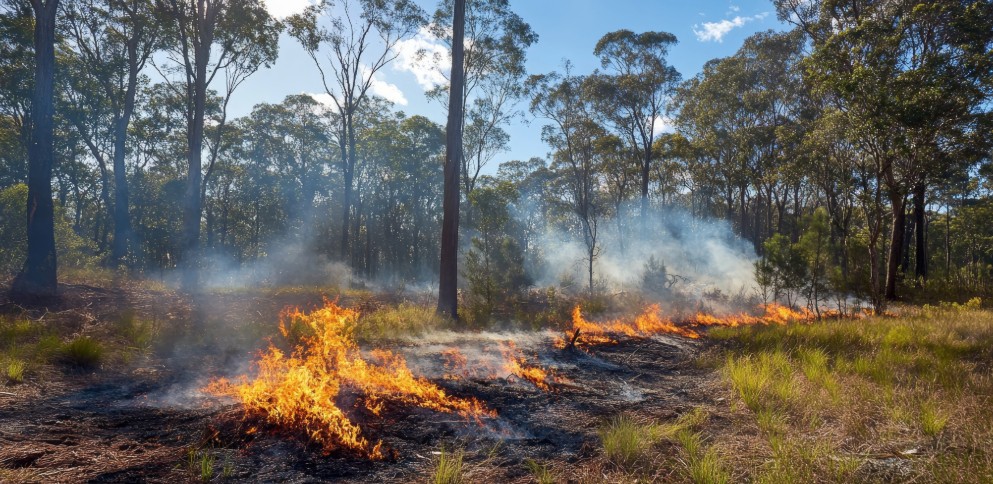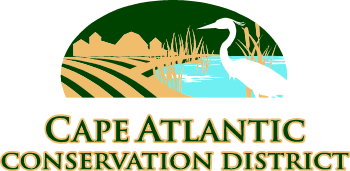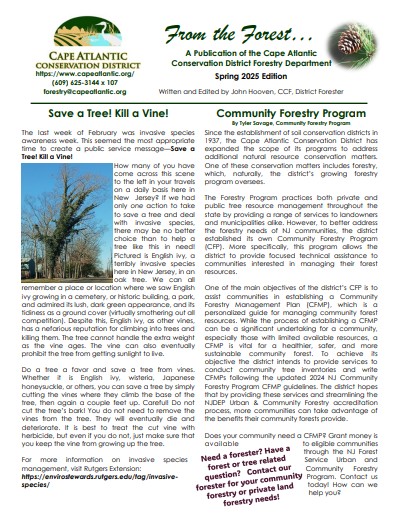The latest issue of From the Forest…, the Cape Atlantic Conservation District’s Forestry Department newsletter, offers important updates for landowners, homeowners, and anyone interested in conservation. Below are highlights from the Spring 2025 edition, along with a reminder to subscribe and stay informed year-round.
Each edition of the Cape Atlantic Conservation District newsletter provides valuable information on tree care, conservation practices, funding opportunities, and public events. Subscribing is a great way to stay updated and involved in local natural resource management.

Save a Tree, Kill a Vine
Invasive vines such as English ivy, wisteria, and Japanese honeysuckle pose a serious threat to trees throughout New Jersey. These aggressive plants can choke trees, block essential sunlight, and add significant weight that may cause branches or trunks to break.
One of the most effective actions residents can take is to cut these vines at the base and again a few feet higher on the tree. The vines will eventually die and deteriorate without needing to be pulled down. To prevent regrowth, treating the cut surfaces with herbicide is recommended.
For more on invasive species management, visit: https://envirostewards.rutgers.edu/tag/invasive-species/
Strengthening Communities Through Forestry Management
The Cape Atlantic Conservation District’s Community Forestry Program (CFP) provides technical support to municipalities looking to manage their community trees more effectively. A core feature of the program is helping towns develop a Community Forestry Management Plan (CFMP) — a vital tool for maintaining safe, healthy, and sustainable urban forests.
CFMPs support communities by:
- Guiding long-term tree care and planting
- Helping secure state funding
- Earning NJDEP Urban & Community Forestry accreditation
District staff assist with tree inventories and plan development based on the latest 2024 guidelines. Grant funding may also be available through the NJ Forest Service Urban and Community Forestry Program for eligible towns.

Wildfire Awareness and Prevention
Wildfires are an increasing concern in New Jersey, particularly in the southern coastal plain. Changing climate conditions, land use patterns, and development in the Wildland Urban Interface (WUI) all contribute to the growing risk of severe fires.
New Jersey’s native forests are part of a fire-dependent ecosystem, meaning species like pitch pine and oak rely on periodic fire to thrive. The NJ Forest Fire Service uses prescribed burns (RxB) to reduce the fuel load and improve forest health. However, forests often need thinning and proactive management by foresters before burns can be safely implemented.

For forest landowners, a forest management plan is the best defense against catastrophic wildfire. Homeowners in the WUI are encouraged to adopt Firewise practices to reduce risk and enhance property resilience. More information is available at:
https://www.nj.gov/dep/parksandforests/fire/program/firewise.html

